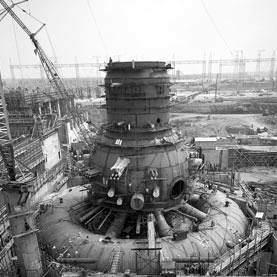Safety worries dissuade true place of nuclear, experts say
 With nuclear energy seemingly at its least popular in years, many have begun to neglect the benefits of the power source that never really made it.
With nuclear energy seemingly at its least popular in years, many have begun to neglect the benefits of the power source that never really made it.
Germany, France, other European nations and the United States are all making concerted efforts to cut their use of nuclear power, an effort kicked into high gear by the Fukushima disaster in 2011.
But fear of fallout could be put aside with the development of small- and medium-sized reactors (SMRs), which bring all the benefits of nuclear energy in a much more easily-managed form.
With nearly a dozen countries now researching various forms of SMR the US has jumped headlong into the effort, giving the green light to a number of new project and devices to bring about a small-scale nuclear revolution.
A new paper from the United States’ Nuclear Energy Institute says the opportunity for SMRs is vast, with as many as 73 full-sized nuclear reactors to be retired within the next twenty years.
The changing of the guard will leave room for the new generation of devices to really take off, providing the investment and ingenuity line up at the right time.
“If we develop clean energy technology the world wants, we can transfer that ... and build relationships with these developing countries that can last 100 years,” Paul Genoa, the institute's senior director of policy development, said in an interview.
“Small reactors were designed with Fukushima's lessons learned,” Genoa posits, saying it requires SMR designs be “environmentally benign,” and built “to completely avoid the kind of meltdown [you get] when you lose offsite power.”
A separate report from the Institute for Energy and Environmental Research is less optimistic, saying trying to set up a system integrating small nuclear reactors would “still present enormous financial risks”, due to the sectors habit of blowing away budgets.
It has been a rough period for nuclear fuel. But, with a great deal of interest in the considerable benefits it offers, it is likely that the oft-maligned energy source will take its place in the future energy mix.







 Print
Print